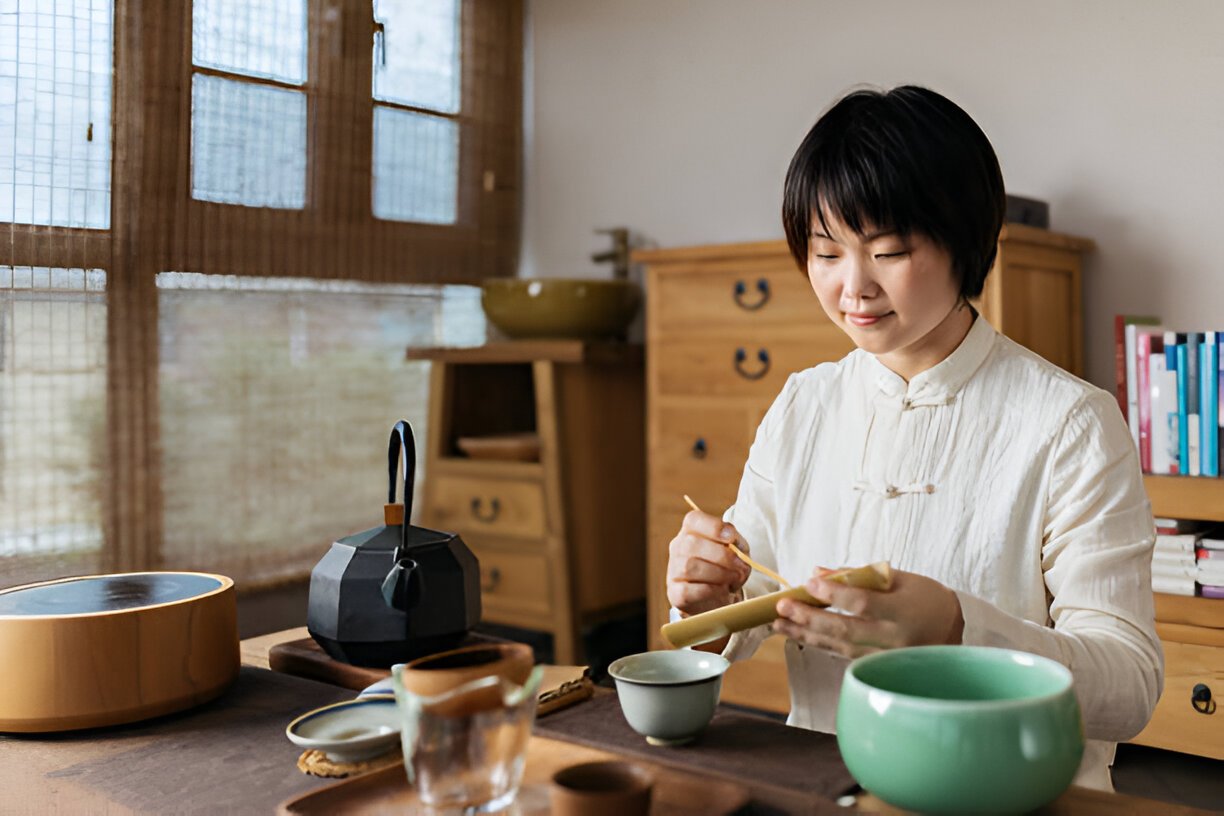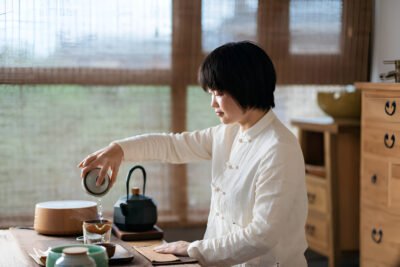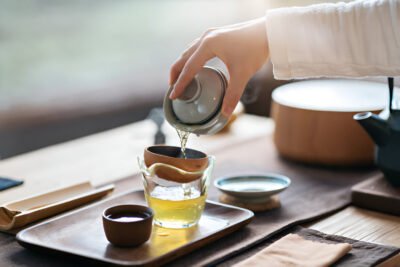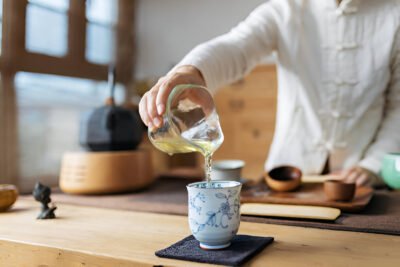China is the birthplace of tea, and since the cultivation of tea trees began by humans over 3,000 years ago, through the efforts of countless tea-related personnel over thousands of years, we have now formed a massive scale of tea cultivation and processing in over 20 provinces and municipalities across four major tea-growing regions.
In China, green tea is not just a drink, it is a carrier of culture, a witness of history, and an attitude towards savoring life. Every cup of green tea is the essence of nature’s gifts; every leaf of tea carries the profound meaning of China’s ancient tea culture.
Currently, China has traditional six major tea categories and various reprocessed tea products and herbal teas, with a rich variety and many choices. Among the many tea categories, green tea has the largest production and sales, and its fame is renowned worldwide. China’s green tea not only has a unique taste, but also attracts attention for its rich nutrient content and unique processing technology.
There are many famous green tea producing areas all over China, each with its unique local customs and tea culture. So, where in China produces the best green tea?
Next, we will take you on a tour of the top five green tea producing regions in China, where you will learn about their historical origins, distinctive varieties, and brewing methods. Which one do you prefer?
1.West Lake Longjing Tea
West Lake Longjing, China’s No. 1 tea, is also known as Longjing Tea and is produced in the tea-growing area of southern China’s Zhejiang Province, where Hangzhou City is located. The tea trees grow on the slopes around West Lake, where the soil is fertile, the climate is humid, and abundant rainfall and mist provide a favorable growing environment for the tea trees.
The characteristic of West Lake Longjing tea is its tender green color, bright appearance, clear and pure hue, subtle and lasting fragrance, sweet and refreshing aftertaste, and its production process includes picking, roasting, frying, and shaping, to maintain the tender green color and unique flavor of the tea.
2. Biluochun tea
Biluochun, one of China’s famous green teas, is produced in Dongting Mountain, Taihu Lake, Suzhou City, Jiangsu Province. Biluochun tea is made from the tender buds of tea trees picked in spring, with tightly curled leaves, visible white hairs, a silvery-green color, and a lush, enticing appearance. It is shaped like a spiral, hence the name “Biluochun”. Its tea soup is clear and bright, rich and mellow, refreshing and moisturizing, with a lingering aftertaste.
Biluochun tea has a slender and upright shape, tender young buds that are curled in a spiral shape, a greenish-yellow color, a fragrance that is delicate and long-lasting, a clear and bright soup, and a fresh and sweet aftertaste. Its production process is meticulous and handmade, including picking, pan-frying, rolling, kneading, and drying, to preserve the original flavor and nutrients of the tea.
3. Huangshan Maofeng Tea
Huangshan Maofeng tea is produced in the southern tea-growing area of Anhui Province, China. Huangshan Maofeng tea trees grow in the high-altitude areas of the Huangshan mountain range, where the climate is cool and misty, the soil is fertile, making it an ideal place for tea growth. Huangshan Maofeng tea originated in the late Qing Dynasty, when the mountains here were tall and forested, with short sunlight and abundant mist, providing excellent natural conditions for tea trees to thrive. The tea trees were nourished by the mist, resulting in excellent quality. The production of Huangshan Maofeng tea is very meticulous, resulting in a Huangshan Maofeng tea with a fine, slightly curved shape. The Huangshan Maofeng tea leaves are long and evenly shaped, with the tips visible, a bright green color, a fragrance that is calm and long-lasting, and a fresh and sweet aftertaste.
4. Taiping Houkui
Taiping Houkui, a type of green tea with a pointed tip, is a historical Chinese tea that was created in 1900. Its appearance is two leaves wrapped around a bud, flat, straight, and naturally spread out, with white hairs hidden. It is known as “the pointed tip of Houkui from Taiping , not scattered, not curled, and not upturned.” Its leaf color is a uniform green with a smooth texture, the veins of the leaves are a greenish red, with a refreshing scent of orchids, a rich and sweet taste, and a unique monkey-like aroma. The soup is a clear green, the leaf bottom is a bright green, and the buds and leaves are plump.
5. Xinyang Maojian Tea
Xinyang Maojian tea is produced in Xinyang City, central China, and its surrounding areas. The tea bushes of Xinyang Maojian grow in the mountainous areas around Xinyang, where the climate is mild and humid, the soil is fertile, and the sunshine is abundant, providing excellent conditions for the growth of Xinyang Maojian tea leaves. The tea leaves of Xinyang Maojian have a slender and upright shape, tender buds with a soft tip, a light green color, a refreshing taste, and a sweet aftertaste. The production process emphasizes manual processing, including picking, frying, rolling, and drying, to preserve the original flavor and nutrients of the tea.
The above 5 premium green teas, as important varieties of Chinese green tea, not only have unique geographical and climatic features, but also enjoy great popularity due to their exquisite tea-making techniques and superior quality. When tasting these teas, not only can you savor their fresh fragrance and refreshing taste, but also appreciate the profound depth of Chinese tea culture.





